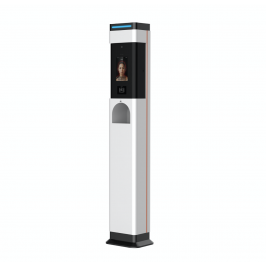How to Survive Retail during COVID-19: 4 Tips

All industries have been experiencing a severe impact because of the COVID-19 pandemic; they have to meet challenges and react efficiently to the ongoing crisis. As the number of COVID-19 cases keeps growing, organizations must concentrate on safeguarding their employees and clients whilst putting every effort on limiting the spread of Coronavirus. Retail reopen during Coronavirus may be tough for business owners since this sector is right at the forefront of the new, changed world. Post-Coronavirus retail will be quite different than before. Hence, retailers must quickly take steps to adapt if they want to survive in these new, uncertain conditions. Here are the key measures that should be taken in order to trade successfully and even increase profits during the pandemic.
Identify Risks
In almost all countries retail is a distressed sector with diminishing buyer demand and threats from sales and online models. Lots of companies assume that the virus poses a moderate or severe threat to their business. To avoid collapse, it’s crucial to identify risks in your niche and try to prevent them.
Here are some of the common risks that all retailers face during Corona:
- High risk of virus transmission among employees and clients. COVID-19 spreads by a cough or sneeze droplets from an infected person, and by touching surfaces or objects with the virus on them, making stores risky places if there are lots of people inside.
- Poor health and safety protocols in the company.
- Faltered supply chains.
- Poor communication between business owners, employees, and customers.
- Poor, not updated according to the new situation marketing strategies.
Although there are numerous challenges and risks, it’s possible to overcome them if you plan carefully and wisely.
Conduct Continuous Temperature Monitoring
According to authoritative retail COVID guidelines, business owners must create a safe environment for both employees and customers. The U.S. Food and Drug Administration (FDA) insists on temperature screening and assessing symptoms in employers and employees prior to starting work since elevated body temperature is the first sign of COVID-19 infection.
Early detection of fever-like symptoms allows you to take additional precautions and prevents the spread of the deadly virus. For this reason, up-to-date smart temperature monitoring systems are becoming an essential purchase today. They allow/disallow entry based on an individual’s health condition. More importantly, advanced equipment catches not just skin temperature but core body temperature, which is a critical metric for detecting potential illness. Which devices are the best to use in stores?
Smart access kiosks - these multifunctional devices will check workers’ temperatures and serve as an employee-tracking tool thanks to built-in face recognition algorithm. The scanners streamline the flow of people and minimize physical contact at a time of social distancing - workers have to stop briefly to be checked.
Smart sanitizing hubs - they are similar to smart kiosks but boast another advanced feature - a hand sanitizer dispenser. You can place this equipment inside the store so that employees and customers can check their temperatures and sanitize their hands.
Thermal security cameras - if you are the owner of a huge mall, such a camera is indispensable for you. It’s a small, wall-mounted device that will discreetly provide consistent surveillance and temperature monitoring of vast groups of people without disturbing your visitors.
All these devices are compatible with the store’s existing security system; they are customizable and easy to use. The tools are non-contact, they provide fast and accurate readings, and send alerts if a person with fever-like symptoms is detected.
Digital Transformation Is A Must
During strict lockdown measures, lots of consumers worldwide have switched their spendings to online platforms and they are unlikely to return offline any time soon, if ever. Therefore, while dealing with multiple problems (rent payments, interacting with staff, margin erosion through massive discounting, etc.), offline retailers should pivot their business towards not only an online world but also to one where client communication and engagement is at the forefront.
This step can be more difficult to take for some retailers more than others. However, if they want their business to survive, they have to focus on getting the right skills. It would be a good idea to fill those gaps in cooperation with external partners.
Interact With Your Customers
How to survive retail? We’ve already discussed 3 crucial steps; however, they all are useless if you don’t win your consumers back! In the post-COVID-19 world, retailers have to become even more customer-centric than they were before, and their offerings must be hyper-relevant. If you want to send a communique to your clients, make it sincere and authentic, emphasize that their health and safety are your top priority.
Make research and find out people’s most pressing problems, and propose your solutions. Be creative and inventive, find new ways to distribute your brand! For instance, you can post educational and fun content about your product (how it’s sourced or manufactured, etc.). Assure your clients that you are always here, ready to help them.
Final Thoughts
The ongoing problems won’t disappear, and, unfortunately, COVID-19 keeps evolving. This complex situation requires a well-managed response from retailers. Let’s sum up what they need to do to survive: Offline retailers do need to buy high-quality temperature monitoring systems so that they can safeguard their workers and clients against Coronavirus inside their stores. Retailers must be resilient, creative, and smart to respond adequately to quickly-changed customers’ needs and demands. They should see today’s situation as a good opportunity for growth and expanding their business. They must show how well they can ride the waves! By following these steps, you’ll be able to surpass your less nimble competitors and survive your business.





